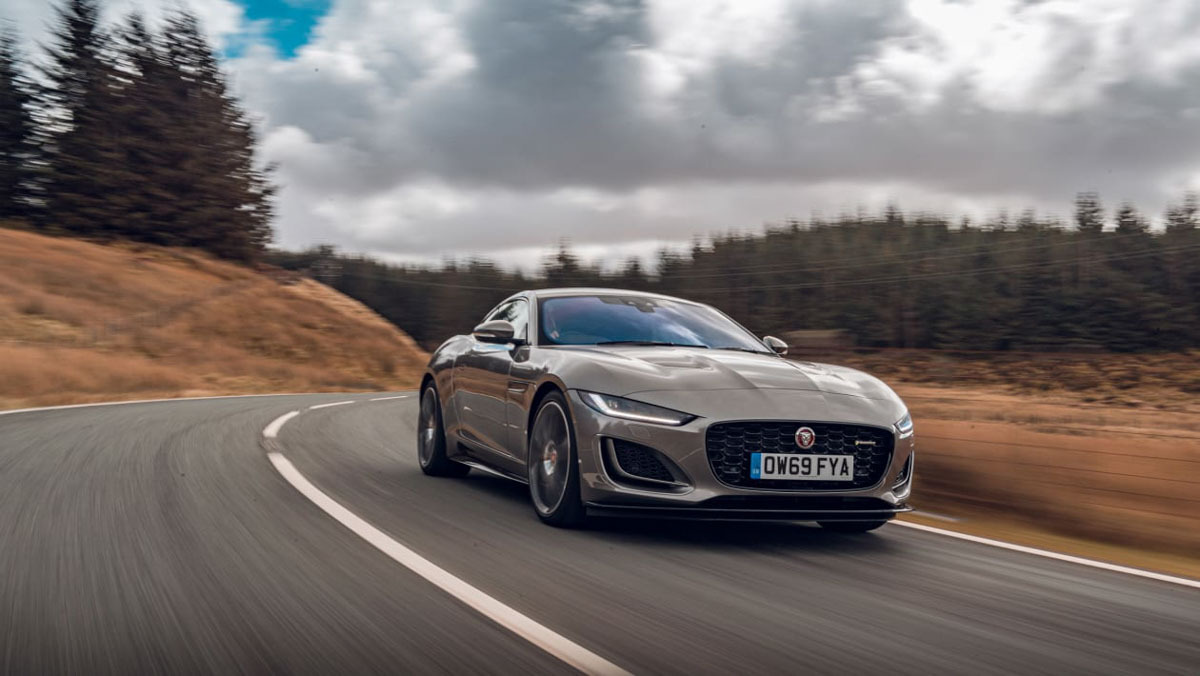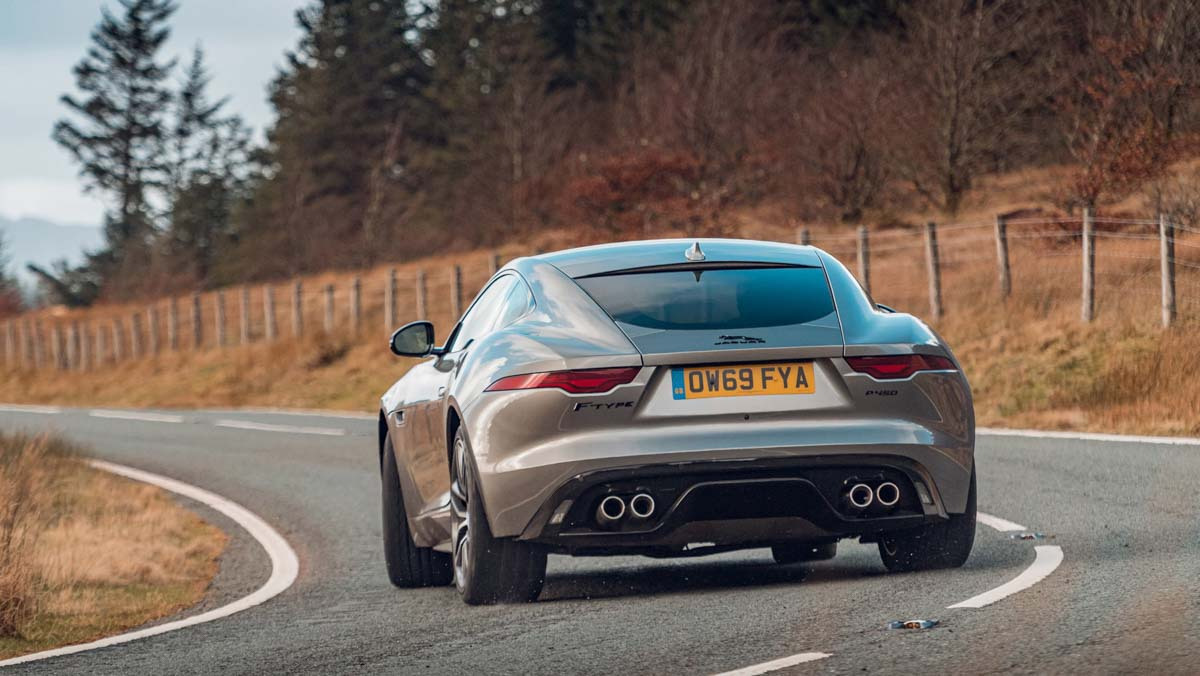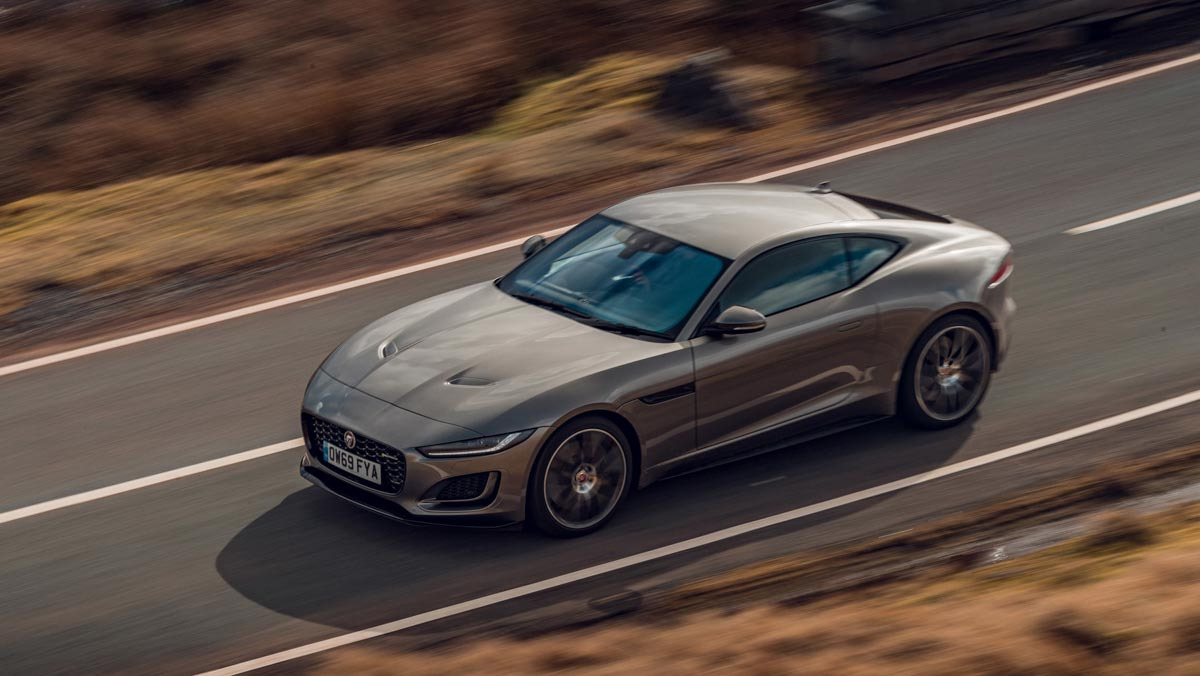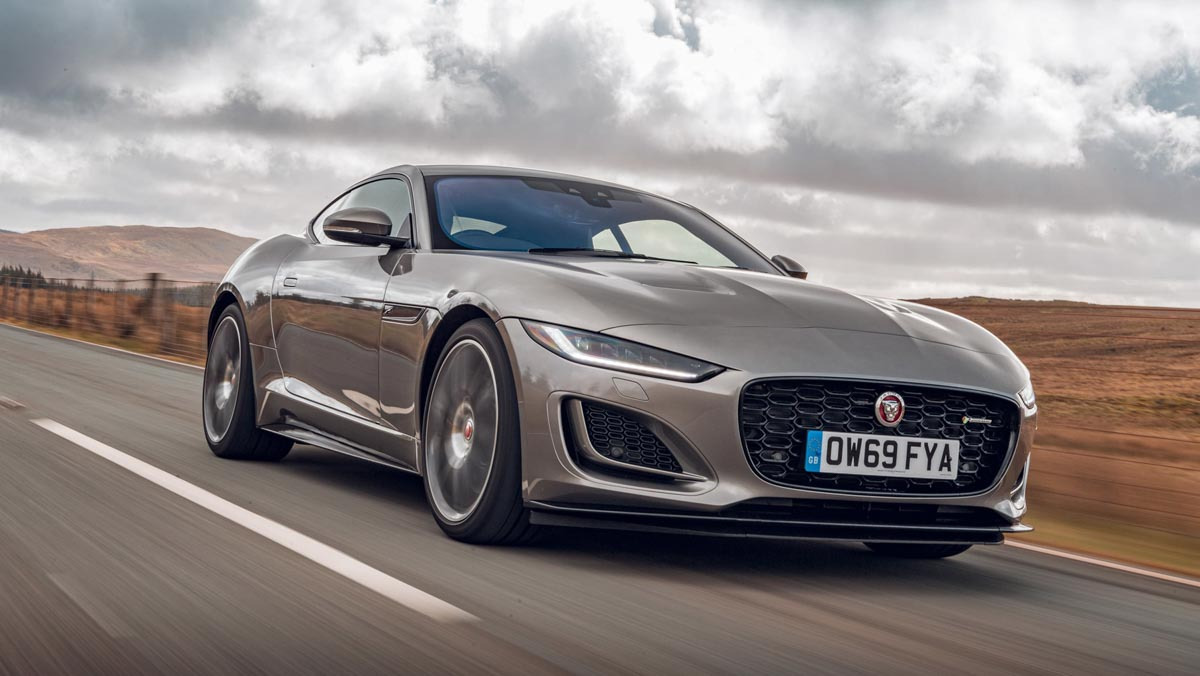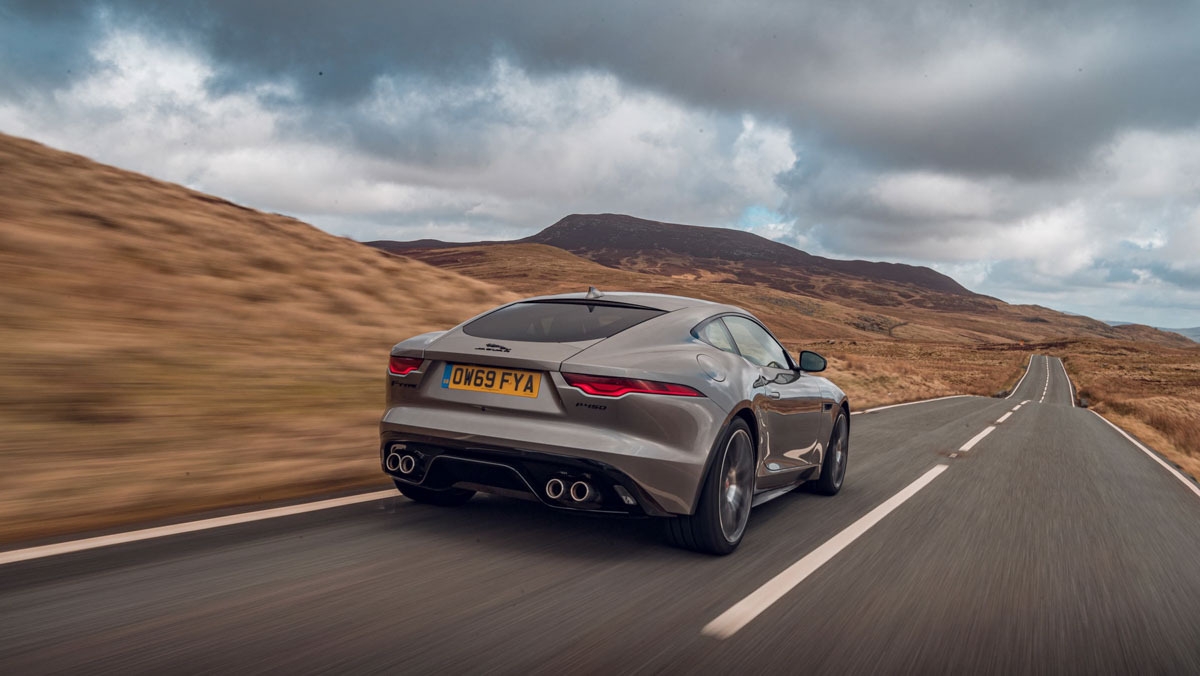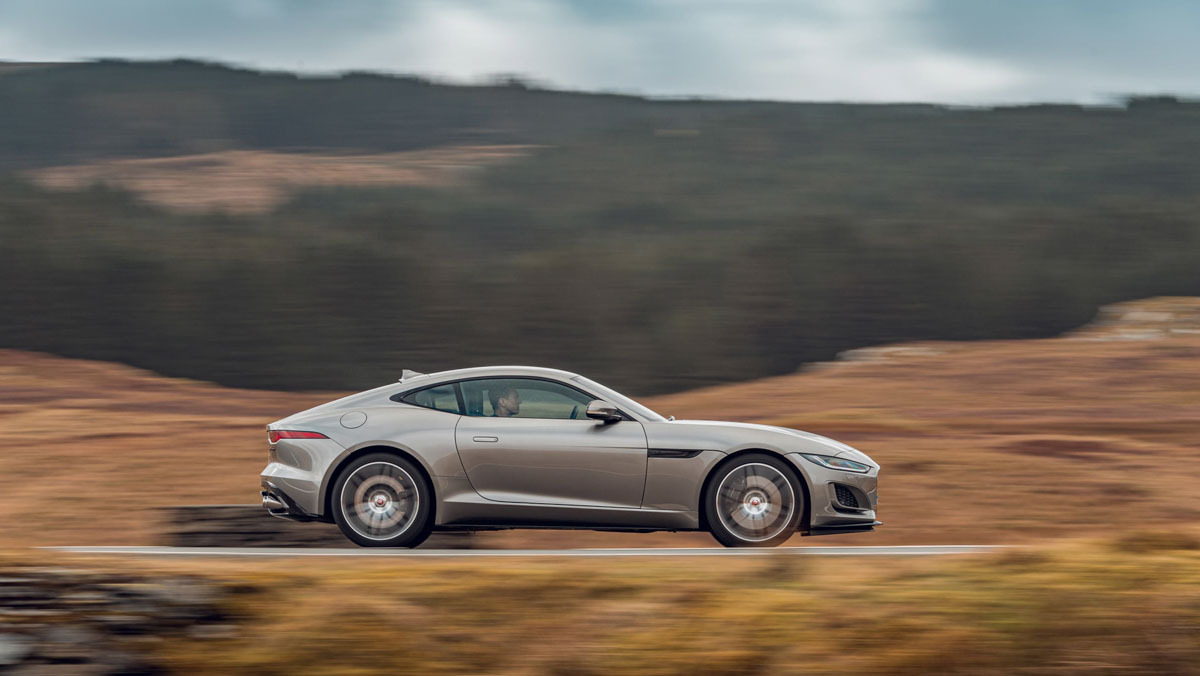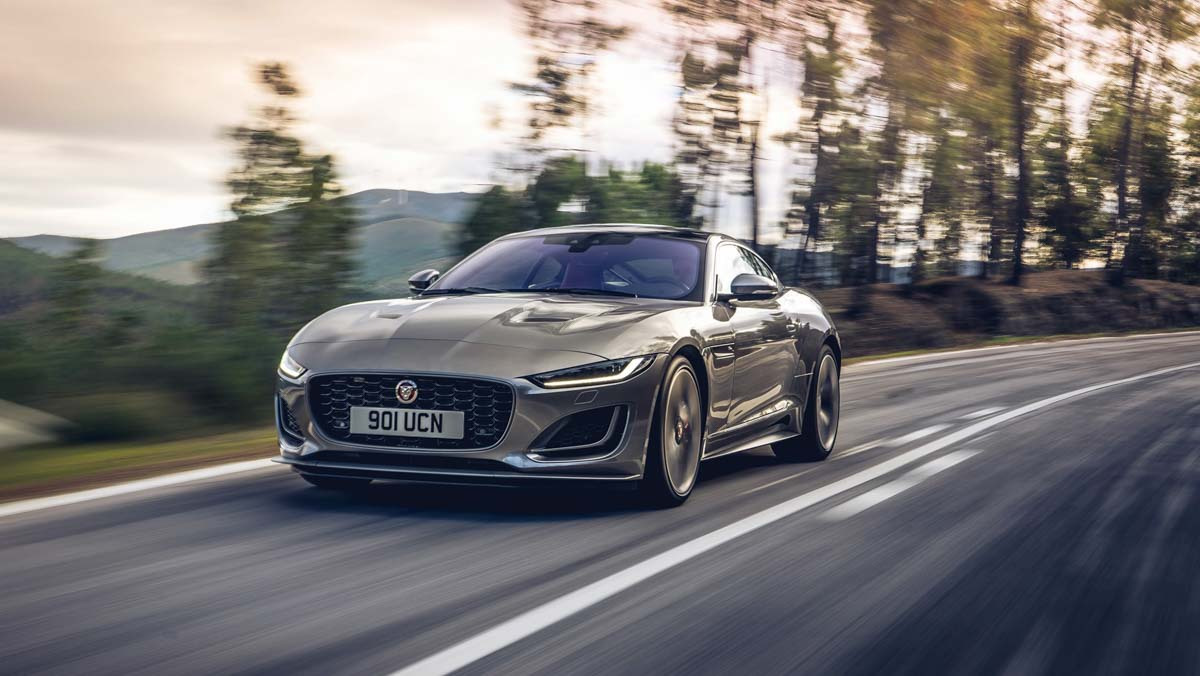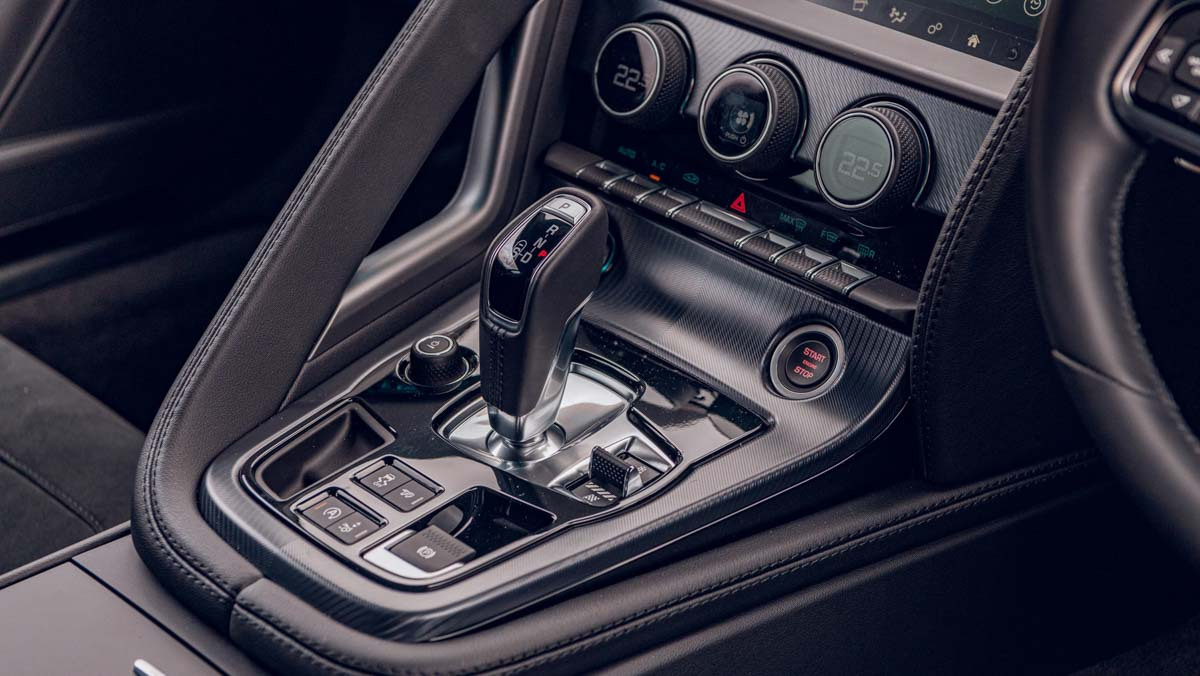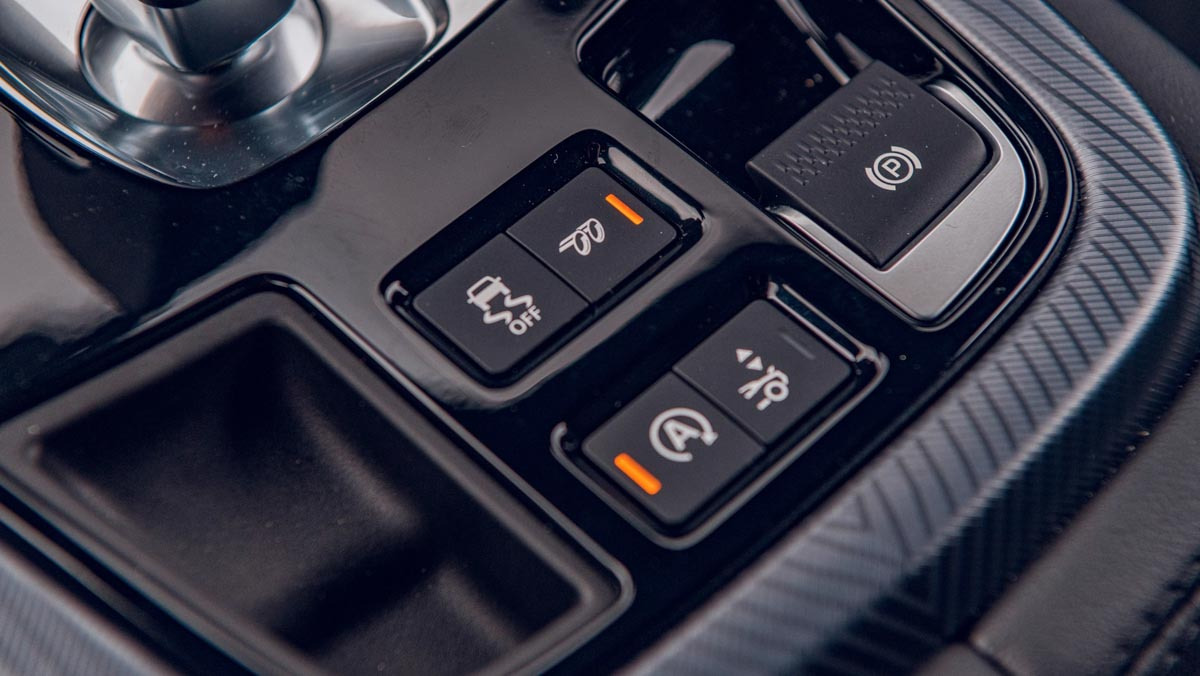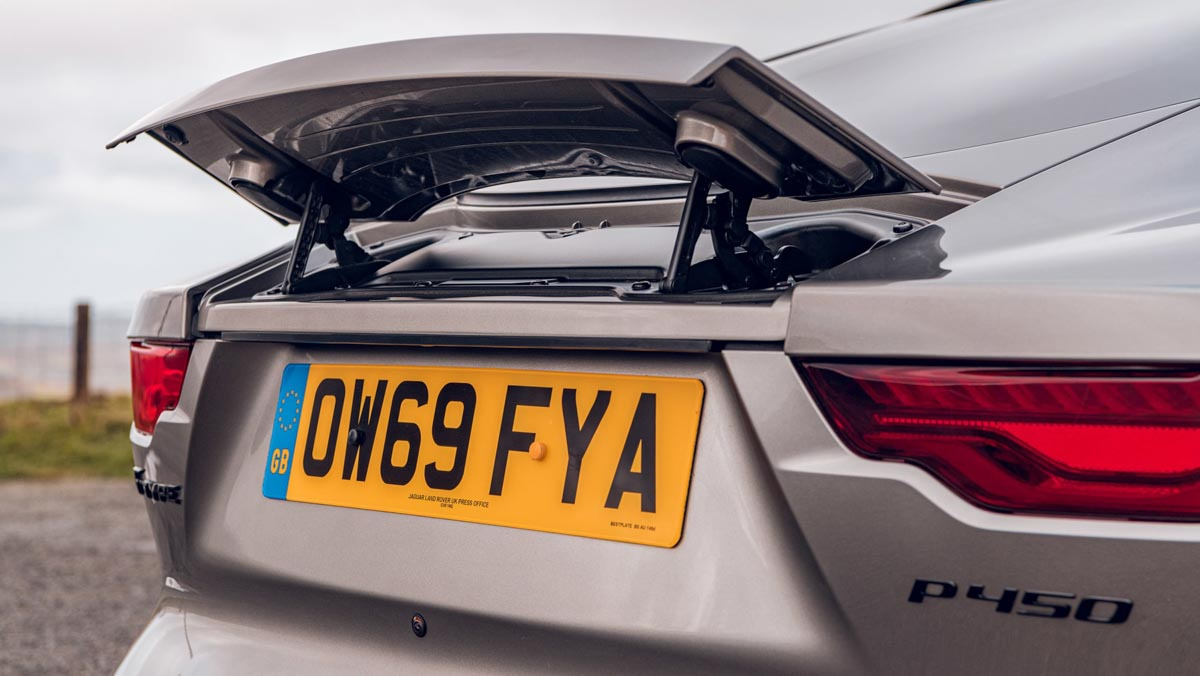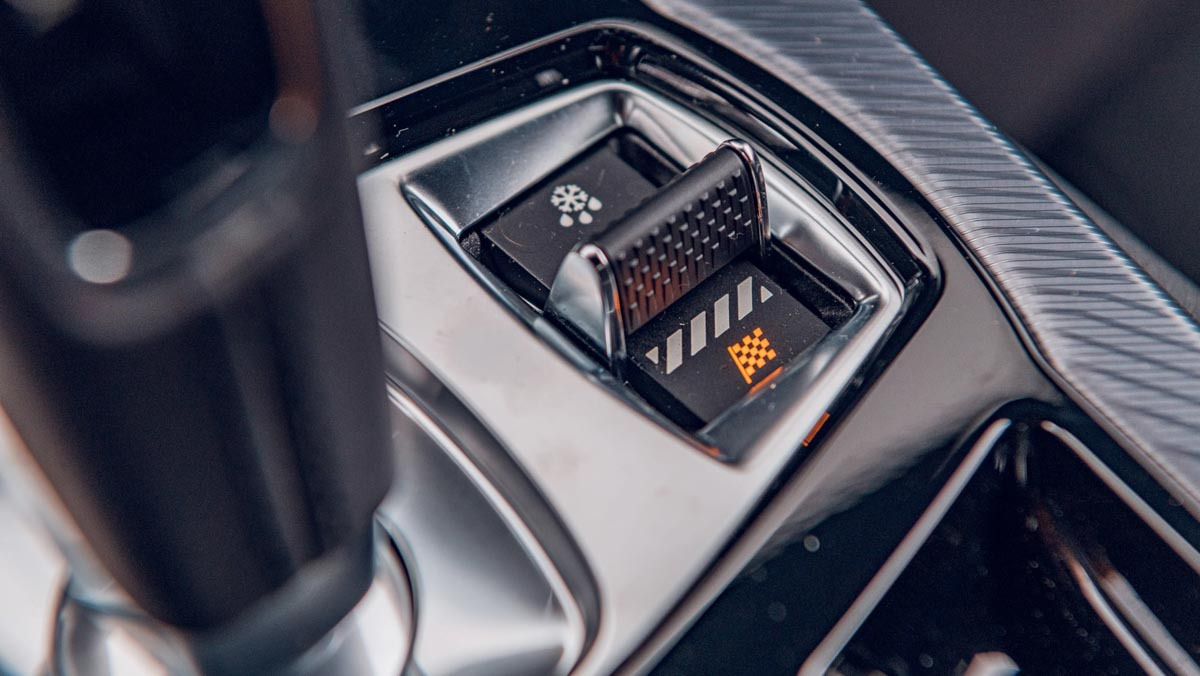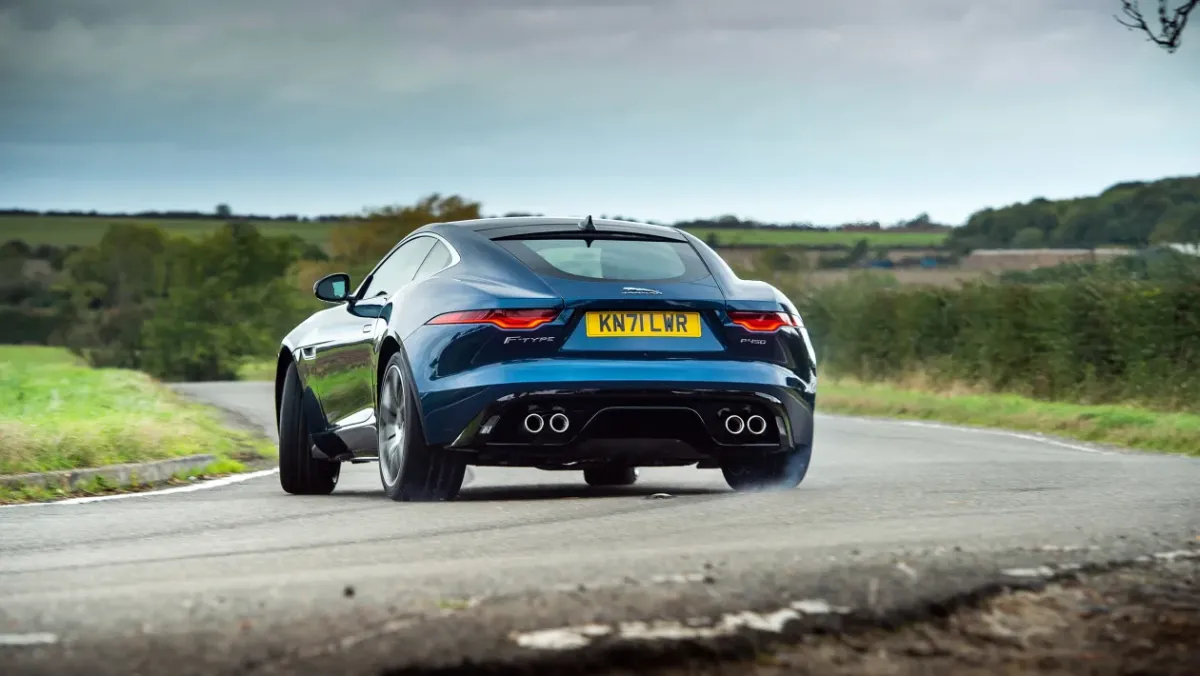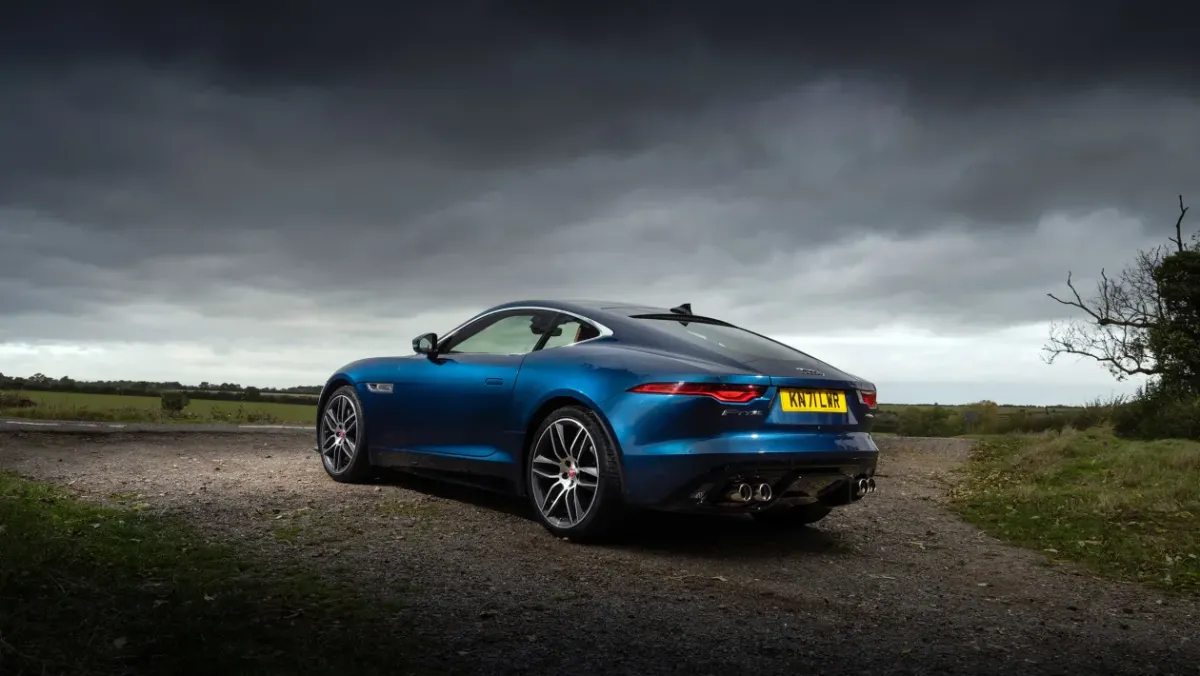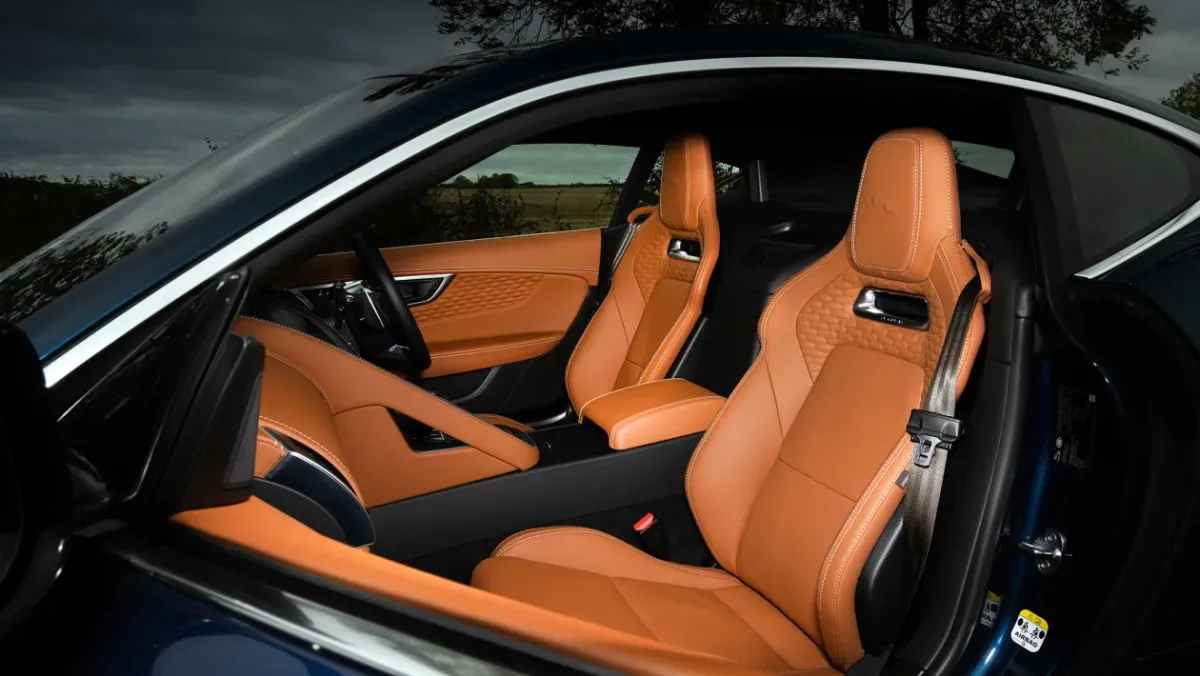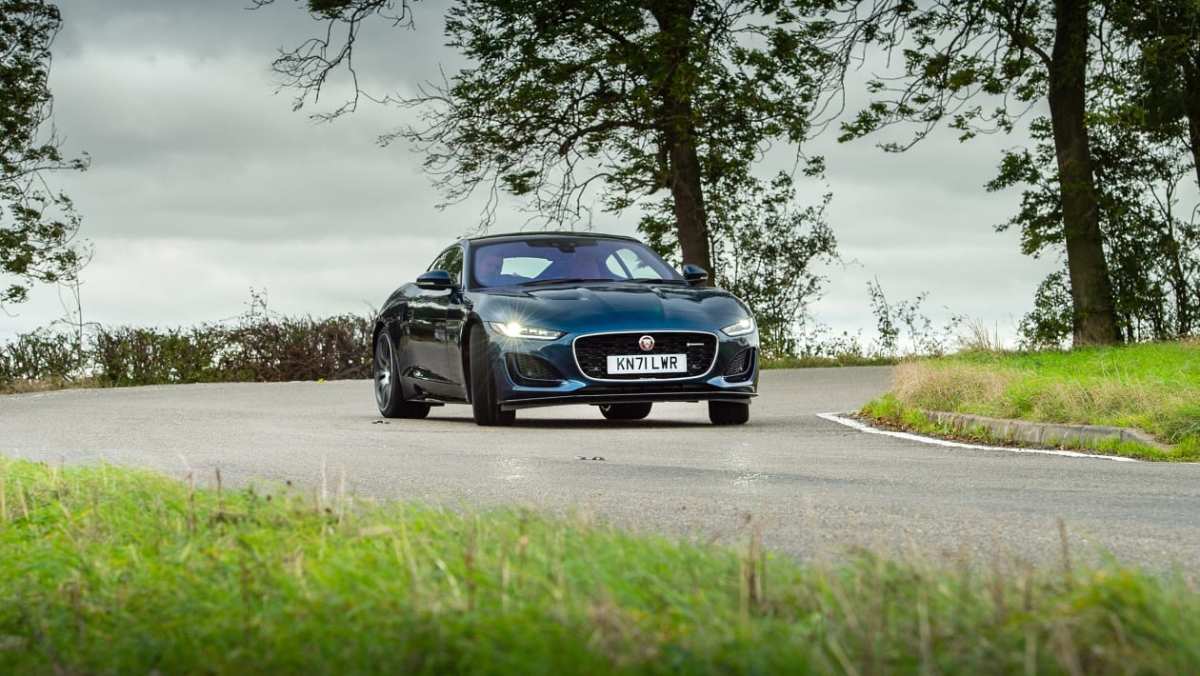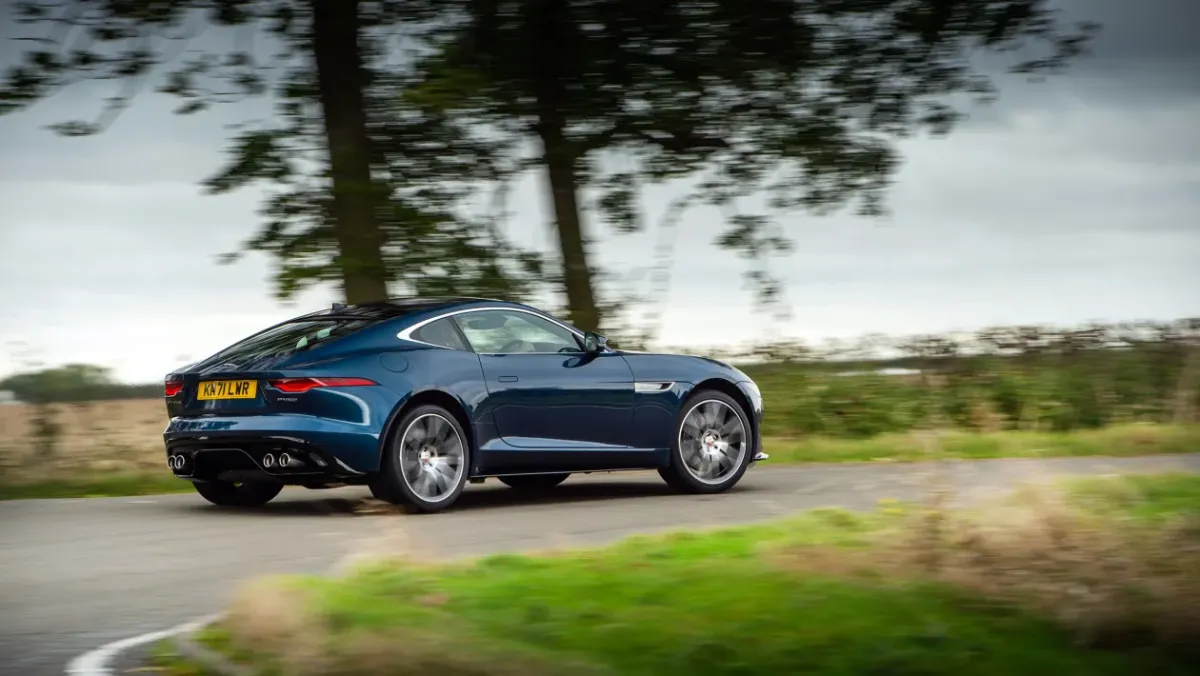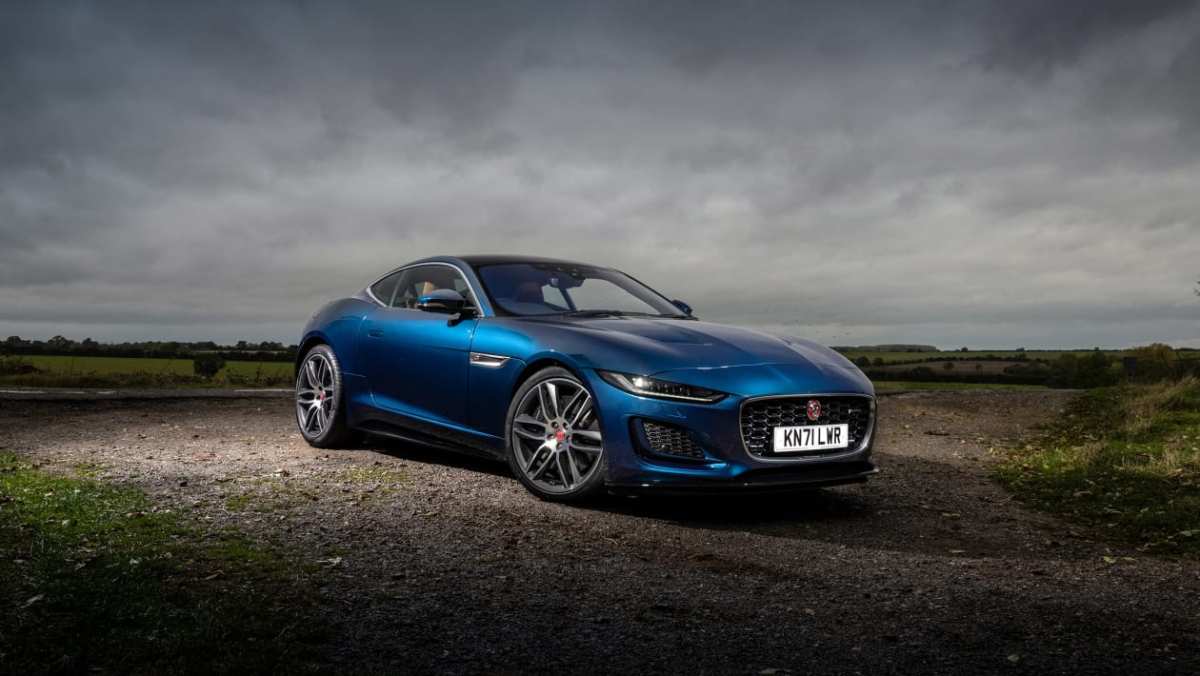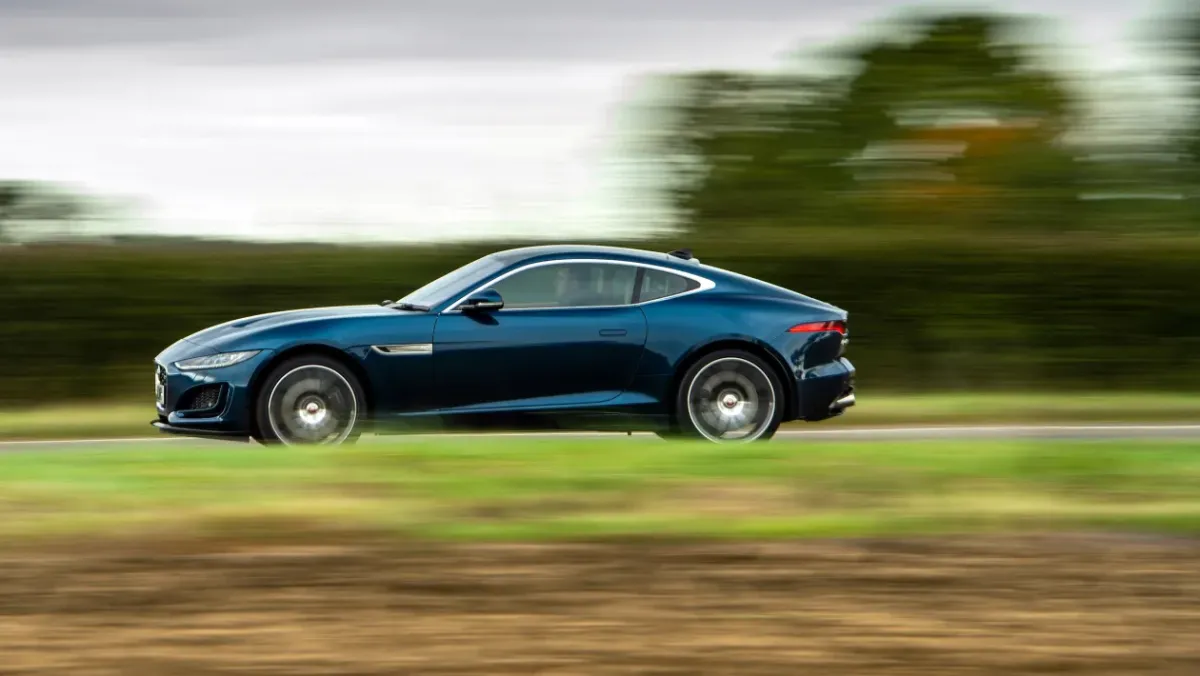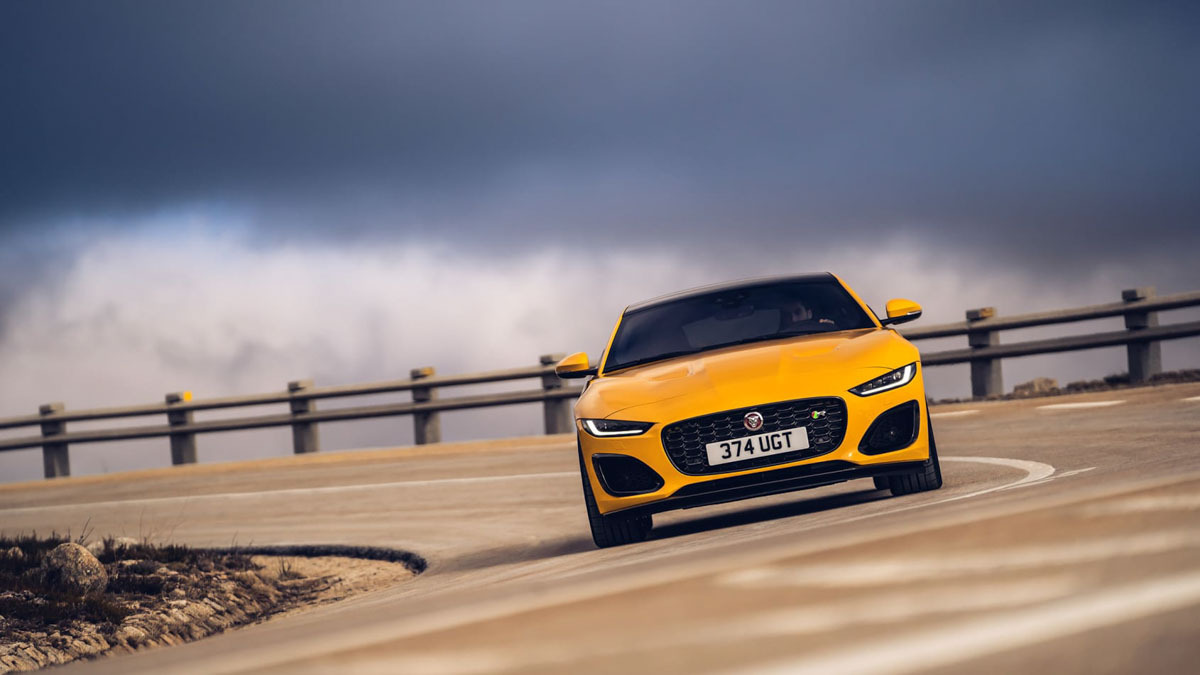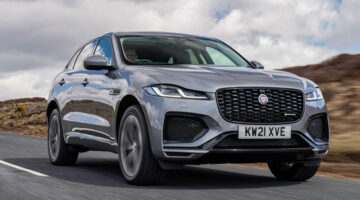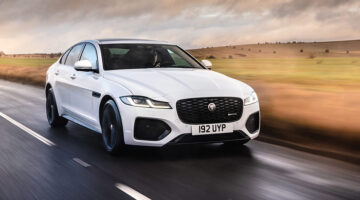The updated Jaguar F-type appeals on style and image, but there’s no escaping its age against razor-sharp rivals
| Dramatic design looks better than ever, not a 911 | |
| Powertrains can feel hamfisted and clunky, steering feedback |
The F-type was heralded as the return of the classic Jaguar sports car when it first hit the road in 2013. Smaller than the XK coupe that it effectively replaced, it was Jaguar’s attempt at producing a world-beating sports car for the first time since the E-type was first revealed in Geneva in 1961.
Seven years later the F-type has been given a major overhaul with fresh styling, a realigned engine range and improved tech. The biggest change to the range is the loss of the old car’s supercharged V6 engine, instead the new F-Type is available in a single four-cylinder turbocharged petrol variant or with a choice of two supercharged V8s. The previous range-topping SVR model is also dead, but the standard F-Type R has picked up its full-strength 567bhp V8 to compensate.
What hasn’t changed is the F-type’s distinctive style. Despite the quite substantially different front end, the Jag’s dramatic proportions and sleek lines have remained true to the original, which even now makes it one of the most distinctive sports cars on sale.
So with a realigned range and some key updates, does the F-type maintain its appeal, or have the changes been too little, too late to compete against its talented and widespread range of rivals?
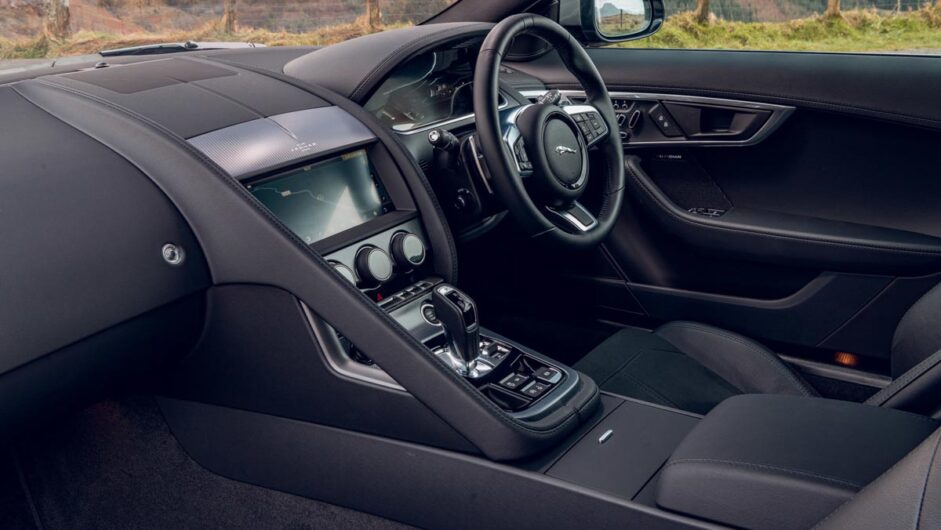
Prices, specs and rivals
The F-Type has historically slipped between key German rivals in terms of price and thanks to the spread of engine options, but with that comes an extreme price variation between models. Kicking off the range is the P300 Coupe which starts at just over $72,000, putting it right in the middle of the heavily populated sports car class.
One could consider everything from the Alpine A110, Porsche 718 Cayman S, Toyota Supra, Ford Mustang GT or even a Mercedes-AMG CLA45 S as a potential rival to the F-type. The 300bhp figure is on the lower end compared to many in this class, but given the heights the F-type range extends to, it is a lot of sports car for the money.
Next up is the P450 at over $74,000, which not only includes the V8 powertrain but opens up the option of all-wheel drive for a further $7k. The chassis layout is largely the same between the different variants, but the V8s do feature bigger wheels, tyres and brakes as standard. At this $94k price point, it slots in around $13k less than a base 992-gen Porsche 911 Carrera or the Lexus LC500, and is closer in price to saloon-based sports coupes like the Audi RS5, Mercedes-AMG C63 S and BMW M4.
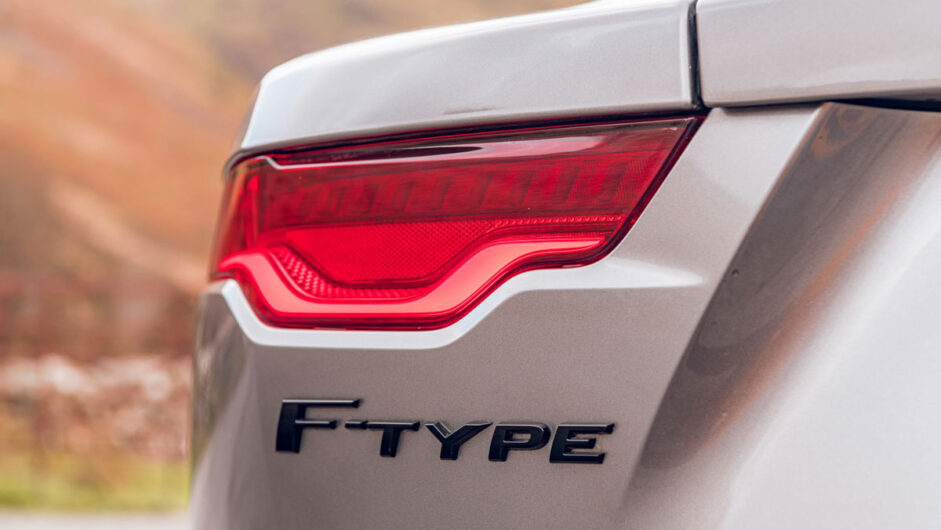
The top-tier all-wheel drive only F-type R tips in at around the $130,000 mark, but while it’s getting on for double the price of the four-cylinder it has the horsepower to back it up. In terms of rivals, a well-specced Porsche 911 Carrera 4S can easily reach six figures and while it still has the edge in outright acceleration, it’s substantially down on power and torque. At near $135k, it’s also impossible to overlook rivals like the Aston Martin Vantage, Audi R8 RWD, Mercedes-AMG GT and their ilk; they might be $13-27k more expensive, but could be considered more serious performance cars than the Jag.
All powertrain variants are also available in Roadster form with a rough $6k price rise (each varies slightly), while R models are also available with carbon ceramic brakes for an additional $7k.
Engine, gearbox and technical highlights
The new Jaguar F-type has reduced its engine range dramatically compared to its predecessor, removing the supercharged V6 engine wholesale from the range. This was done due to its failure to meet modern emissions regulations, and has left a chasm in the range between the entry-level 2-litre turbo four and the supercharged V8 in terms of cubic capacity.
The basic P300 utilises the same Ingenium four-cylinder petrol engine as found across the JLR range. It’s paired exclusively with an eight-speed automatic transmission and rear-wheel drive and produces 297bhp, with a peak 295lb ft of torque available from just 1500rpm.
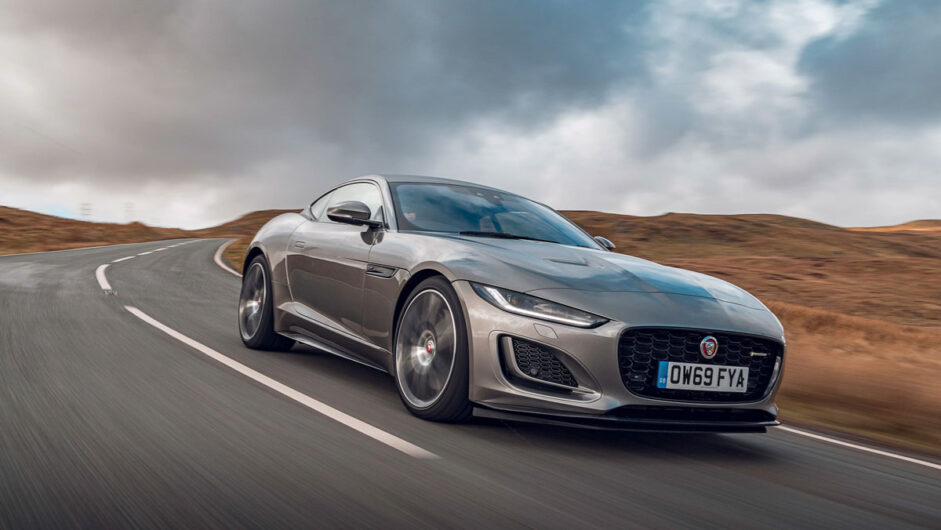
The Ingenium engine is not a particularly performance oriented powertrain in other JLR models and it feels little different here, lacking the enthusiasm or flexibility of top-drawer sporting four-cylinder engines found in rivals from Alpine or AMG.
P450 and P575 models both share the same AJ-V8 Gen 3 5-litre supercharged V8 that’s been used consistently within the JLR range since the original XF-R. It’s available in two states of tune, the first a new 444bhp output that’s the lowest figure in any V8 F-type so far (and is paired with the Ford Mustang GT as the least powerful V8). While this sounds like a criticism, the V8’s torque figure is still a generous 428lb ft between 2500-4500rpm, making it feel nicely understressed.
This gives the powertrain a relaxed gait, and while it lacks the top-end fireworks of the R, it does suit the GT aspect of the F-type. Not only this, but compared to mostly six-cylinder rivals, the V8’s baritone exhaust note is also highly satisfying.
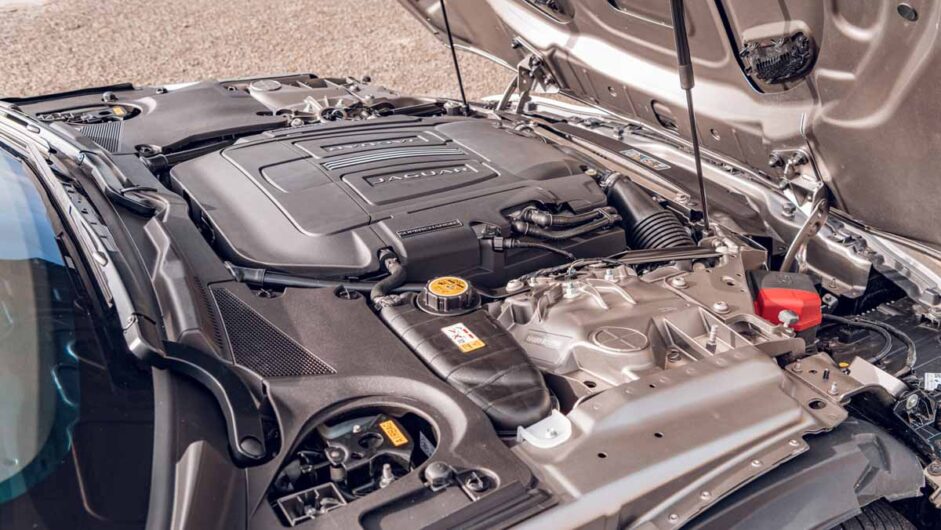
It’s the R’s 567bhp variant that makes all the noise though, both figuratively and literally. It does so by ditching the previous R’s 542bhp version in favour of the unit found in the old notoriously expensive SVR model.
As well as its new power figure, the R also picks up new springs and dampers, while both the R and its new P450 sibling get stiffer rear knuckles, tighter bushings and uprated wheel bearings. All new F-types have steering set-ups individually calibrated to their application, with different weighting and even steering ratios.
Otherwise, it’s as per the previous F-type, with double wishbones all round, electronically adjustable dampers and a kerb weight that’s curiously heavy for something with so much aluminium in its construction. At a quoted 1743kg, this is over 100kg more than a 911 Carrera 4S.
Performance and 0-100 time
The F-type R’s headline figures are good for a 0-100kph in 3.7sec and a top whack of 300kph. A thunderous exhaust note is once again one of the F-type R’s party tricks, though it’s no longer quite so thunderous when you start it up each morning, thanks to a default quiet start function. This can be overridden by pressing the exhaust button before you start, or setting the car in Dynamic mode – and Jaguar was keen to remind us it’s as rowdy as ever at full throttle.
P450s do the sprint to 100kph in a more leisurely 4.6sec regardless of whether power goes to two or four wheels, while the P300 takes a yawning 5.7sec. Performance from the P450 does reflect its laid back nature, and the torquey power delivery doubles down on this, but it’s the P300’s performance that’s actually more of a disappointment.
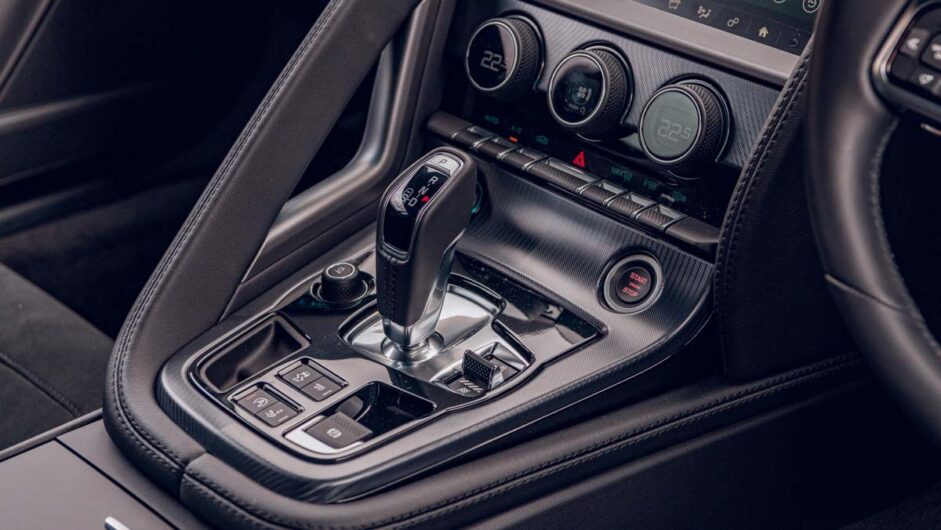
Progress is solid, but the four-cylinder has the same lethargic response familiar to other JLR products that share this engine. Turbo lag can be an issue, but there also seems to be a hesitation to gain or drop revs, making the engine feel like it’s lubricated with golden syrup, rather than engine oil.
This feeling is exacerbated by the short gear ratios that exaggerate the engine’s unresponsiveness, making the gearbox feel almost CVT-like as the engine only barely feels like it engages a gear properly before the next upshift. Flick it into manual mode and there is a more natural feeling to acceleration, but it still lacks the crisp throttle response we expect from four-cylinder engines found in hot hatchbacks, let alone $75k sports cars.
Ride and handling
Regardless of its age, the top-level F-Type R is still very entertaining. Much of that comes from the delivery and sound of the supercharged V8, which is as boisterous, vocal and responsive as ever. Leaving the line in a hurry is very easy indeed, with huge straight-line traction and strong power delivery thanks to the lag-free nature of the supercharger. Shifts from the eight-speed are brisk, though Jag’s fiddling with the software has introduced a frustrating thump to the changes at high rpms in Dynamic mode. Jaguar deems it appropriate for a sports car, but ‘irritating’ is the first word that springs to mind when driving it.
That said, overall it feels just a little more relaxed than before, as if Jaguar has tuned out some of the overly jumpy nature that could catch out the previous R. It’s still hyper-responsive to throttle inputs in Dynamic particularly, but even on damp roads it doesn’t seem to overwhelm the rear tyres quite as easily as it used to.
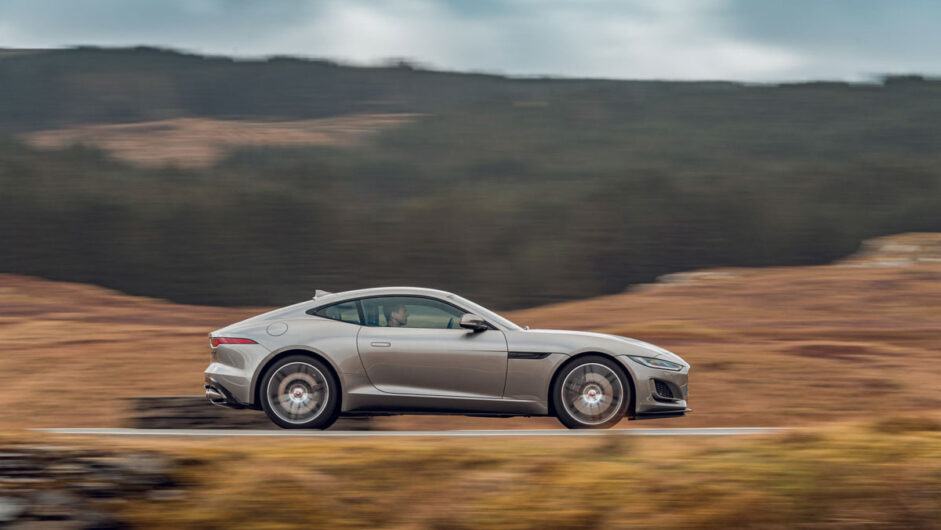
Just as the power delivery seems a little less hyperactive, so too does the chassis seem more in tune with your inputs. The new steering ratio is slightly more relaxed than before, and easier on the self-centring than some other recent Jags, including the new P450. The benefits are numerous: better feedback, less muscle required on a twisty road, and less chance of unsettling the F-type’s bulk when you’re tipping it through a tricky turn.
Jaguar has been keen to give the car a rear-wheel-drive feel, and it’s worked – from the moment you turn in the car takes a poised stance, and from there you can get on the power and feel the car pushing you along rather than dragging from the front. There’s plenty of turn-in bite and good mid-corner grip, and while you can feel the weight moving around under braking or when you need to flick from one direction to another, the body is well controlled.
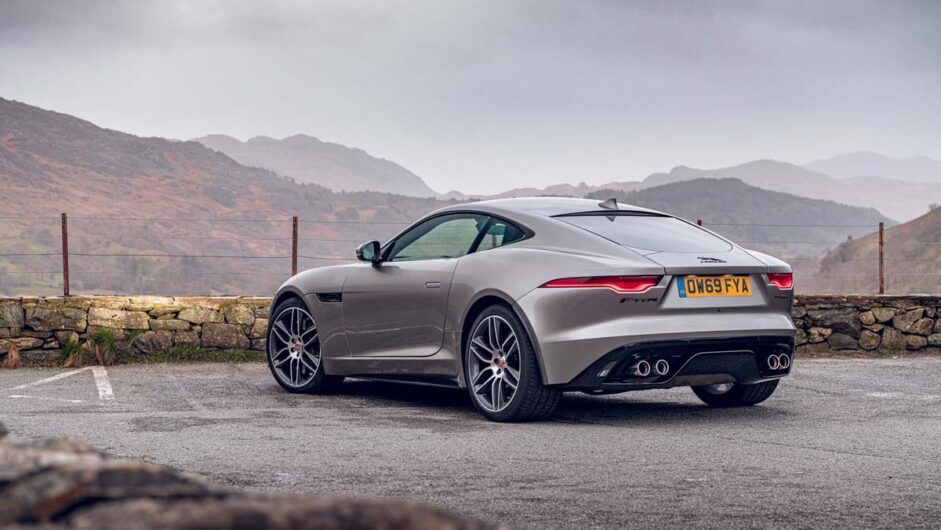
Throw in strong stoppers and a mature ride (not to mention a cabin that has enjoyed a few quality tweaks as well as improved infotainment, and revised styling that still turns heads) and the F-type continues to neatly bridge the gap between sports car and GT. And the fun factor, thanks to the balanced chassis and monstrous power output, is as present as ever.
The P300’s one key advantage over the V8 models is the more balanced chassis that allows the lighter body to flow with the road with increased sophistication and fluency. Unfortunately, this is offset by the four-cylinder’s lack of focus. The P300 doesn’t exercise its improved agility due to the tepid performance, the smaller brakes lack bite and the inability to really key into the road surface. Push harder and its open rear differential makes hard acceleration scrappy, which only distances you even further from a powertrain that already feels remote and unresponsive.
L/100km and running costs
Fuel economy has never been an F-type strong point, and so it remains. The entry-level P300 is perhaps the most surprising, with a WLTP rating of between 9.7-9.5L/100km. In our experience, it’s a figure that’s about right, sometimes dipping into the 30s under stress-free motorway runs. Push a little harder the L/100km will drop, but not as dramatically as with more highly-strung engines.
The V8s are both rated at around 10.9L/100km, but drive these with more aggression and the consumption will drop more aggressively than the P300’s. Oddly, on paper the least efficient of all F-types is the P450 AWD, which at 11.2L/100km is a full less efficient than the also all-wheel drive R, despite the latter’s 123bhp power advantage. Convertible models have as near as identical figures.
Consumables will be a considerable cost, due mostly to the high kerb weights on all models. P300 models tip the scales at 1595kg, rising all the way up to 1818kg for the R. Convertible models are only 20kg up on the Coupes.
Interior and tech
There’s an old adage that good design doesn’t date – this is something that rings true on the F-type. The interior, despite its considerable age, still looks and feels excellent. The chunky, substantial dash volume and high scuttle makes the F-type feel initially intimidating, but the seating position has plenty of adjustment to find the right balance between feeling encased, yet still being able to see out.
The asymmetrical dash layout is dominated by the passenger-side grab handle and joystick-like gear selector, both of which retain the authenticity of an interior driven by design, rather than technology. The F-type’s slick pop-up central air vents and simple, clear air-conditioning controls also remain.
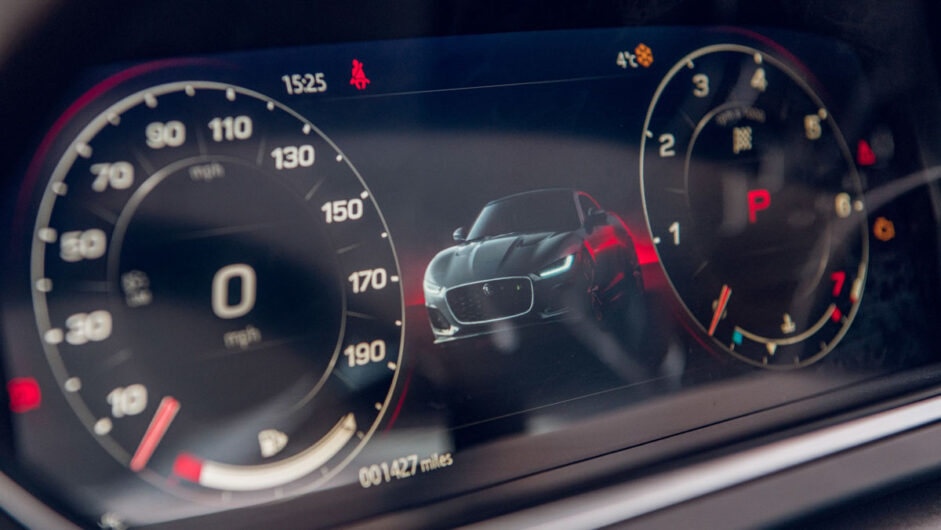
The downside to this dash architecture is that Jaguar’s latest twin-screen infotainment system isn’t able to be integrated into the new model. The standard single-screen system works well enough though, especially if you’re the sort to use phone-mirror applications like Carplay or Android Auto.
The new driver’s display is also an improvement on the previous model’s, with a slick high-resolution appearance and fresh graphics, although like other JLR models, this is hobbled somewhat by a slow screen refresh-rate. While that sounds like an odd thing to be irritated by, the stuttery rise and fall of the rev counter needle and speed readouts are an issue shared with an odd cross section of other modern cars; Volvos and Fords seem to have the same quirk.
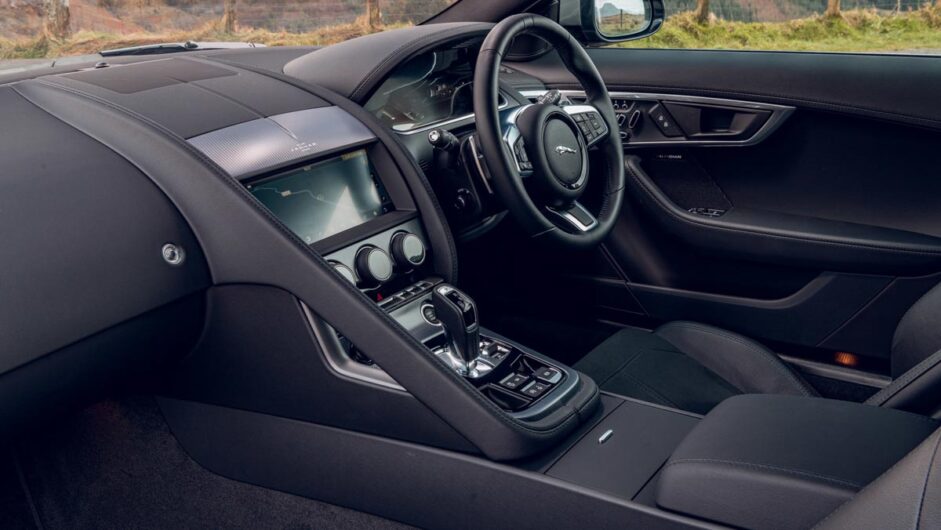
Build quality on the whole is good and at a $60k price point feels excellent compared to rivals from Alpine and Toyota. When you’re approaching triple figures it starts to feel a little underwhelming though, especially when compared to a new 911 or the superbly built Lexus LC500.
This article originally appeared at evo.co.uk
Copyright © evo UK, Dennis Publishing

